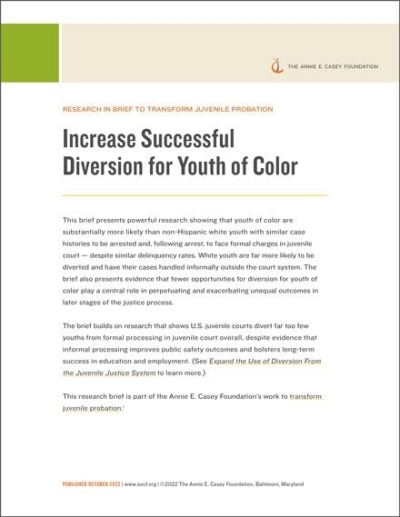Youth and Police
Eighth graders who’ve had contact with police are five times more likely to get arrested by 10th grade when compared to eighth graders who’ve had no police contact.

Youth of color are substantially more likely to be arrested than non-Hispanic white youth with similar case histories. Following arrest, youth of color are also more likely to face formal charges in court while their white peers are far more likely to be diverted and have their cases handled informally — outside of court.
This publication — part of the Annie E. Casey Foundation’s work to transform juvenile probation — builds on research that says U.S. juvenile courts divert too few youth from formal processing. This outcome exists despite evidence indicating that informal processing improves public safety outcomes and helps young people realize greater employment and academic success.
The document also calls for bolstering opportunities for Black youth, in particular, to be successfully diverted from the juvenile justice system. Additional key points include:
Expand the Use of Diversion From the Juvenile Justice System
Eliminate Confinement as a Response to Probation Rule Violations
In 2019, 52% of white non-Hispanic youth referred to delinquency courts had their cases diverted. This same scenario occurred just 40% of the time for Black youth. Despite a federal mandate to address racial and ethnic disparities in juvenile justice and a stated commitment to do so in systems across the nation, the gap in the share of Black and white youth diverted from court hasn’t just persisted — it’s grown over time.